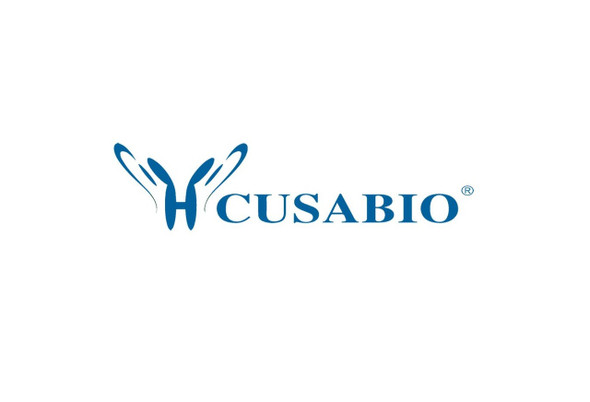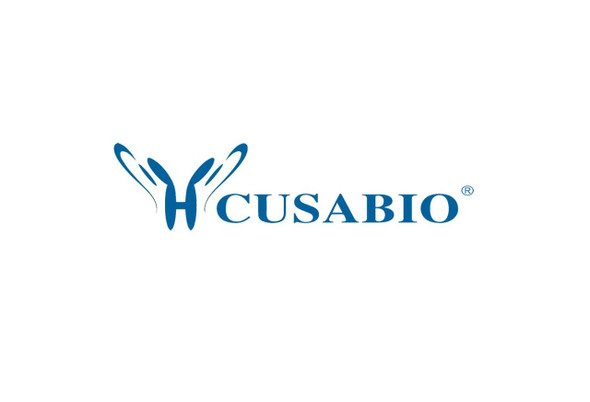Cusabio Human Recombinants
Recombinant Human Phosphoacetylglucosamine mutase (PGM3) | CSB-EP017869HU
- SKU:
- CSB-EP017869HU
- Availability:
- 13 - 23 Working Days
Description
Recombinant Human Phosphoacetylglucosamine mutase (PGM3) | CSB-EP017869HU | Cusabio
Alternative Name(s): Acetylglucosamine phosphomutaseCurated
Gene Names: PGM3
Research Areas: Metabolism
Organism: Homo sapiens (Human)
AA Sequence: MDLGAITKYSALHAKPNGLILQYGTAGFRTKAEHLDHVMFRMGLLAVLRSKQTKSTIGVMVTASHNPEEDNGVKLVDPLGEMLAPSWEEHATCLANAEEQDMQRVLIDISEKEAVNLQQDAFVVIGRDTRPSSEKLSQSVIDGVTVLGGQFHDYGLLTTPQLHYMVYCRNTGGRYGKATIEGYYQKLSKAFVELTKQASCSGDEYRSLKVDCANGIGALKLREMEHYFSQGLSVQLFNDGSKGKLNHLCGADFVKSHQKPPQGMEIKSNERCCSFDGDADRIVYYYHDADGHFHLIDGDKIATLISSFLKELLVEIGESLNIGVVQTAYANGSSTRYLEEVMKVPVYCTKTGVKHLHHKAQEFDIGVYFEANGHGTALFSTAVEMKIKQSAEQLEDKKRKAAKMLENIIDLFNQAAGDAISDMLVIEAILALKGLTVQQWDALYTDLPNRQLKVQVADRRVISTTDAERQAVTPPGLQEAINDLVKKYKLSRAFVRPSGTEDVVRVYAEADSQESADHLAHEVSLAVFQLAGGIGERPQPGF
Source: E.coli
Tag Info: N-terminal 6xHis-SUMO-tagged
Expression Region: 1-542aa
Sequence Info: Full Length
MW: 75.9 kDa
Purity: Greater than 90% as determined by SDS-PAGE.
Relevance: Catalyzes the conversion of GlcNAc-6-P into GlcNAc-1-P during the synthesis of uridine diphosphate/UDP-GlcNAc, a sugar nucleotide critical to multiple glycosylation pathways including protein N- and O-glycosylation.
Reference: The DNA sequence and analysis of human chromosome 6.Mungall A.J., Palmer S.A., Sims S.K., Edwards C.A., Ashurst J.L., Wilming L., Jones M.C., Horton R., Hunt S.E., Scott C.E., Gilbert J.G.R., Clamp M.E., Bethel G., Milne S., Ainscough R., Almeida J.P., Ambrose K.D., Andrews T.D. , Ashwell R.I.S., Babbage A.K., Bagguley C.L., Bailey J., Banerjee R., Barker D.J., Barlow K.F., Bates K., Beare D.M., Beasley H., Beasley O., Bird C.P., Blakey S.E., Bray-Allen S., Brook J., Brown A.J., Brown J.Y., Burford D.C., Burrill W., Burton J., Carder C., Carter N.P., Chapman J.C., Clark S.Y., Clark G., Clee C.M., Clegg S., Cobley V., Collier R.E., Collins J.E., Colman L.K., Corby N.R., Coville G.J., Culley K.M., Dhami P., Davies J., Dunn M., Earthrowl M.E., Ellington A.E., Evans K.A., Faulkner L., Francis M.D., Frankish A., Frankland J., French L., Garner P., Garnett J., Ghori M.J., Gilby L.M., Gillson C.J., Glithero R.J., Grafham D.V., Grant M., Gribble S., Griffiths C., Griffiths M.N.D., Hall R., Halls K.S., Hammond S., Harley J.L., Hart E.A., Heath P.D., Heathcott R., Holmes S.J., Howden P.J., Howe K.L., Howell G.R., Huckle E., Humphray S.J., Humphries M.D., Hunt A.R., Johnson C.M., Joy A.A., Kay M., Keenan S.J., Kimberley A.M., King A., Laird G.K., Langford C., Lawlor S., Leongamornlert D.A., Leversha M., Lloyd C.R., Lloyd D.M., Loveland J.E., Lovell J., Martin S., Mashreghi-Mohammadi M., Maslen G.L., Matthews L., McCann O.T., McLaren S.J., McLay K., McMurray A., Moore M.J.F., Mullikin J.C., Niblett D., Nickerson T., Novik K.L., Oliver K., Overton-Larty E.K., Parker A., Patel R., Pearce A.V., Peck A.I., Phillimore B.J.C.T., Phillips S., Plumb R.W., Porter K.M., Ramsey Y., Ranby S.A., Rice C.M., Ross M.T., Searle S.M., Sehra H.K., Sheridan E., Skuce C.D., Smith S., Smith M., Spraggon L., Squares S.L., Steward C.A., Sycamore N., Tamlyn-Hall G., Tester J., Theaker A.J., Thomas D.W., Thorpe A., Tracey A., Tromans A., Tubby B., Wall M., Wallis J.M., West A.P., White S.S., Whitehead S.L., Whittaker H., Wild A., Willey D.J., Wilmer T.E., Wood J.M., Wray P.W., Wyatt J.C., Young L., Younger R.M., Bentley D.R., Coulson A., Durbin R.M., Hubbard T., Sulston J.E., Dunham I., Rogers J., Beck S.Nature 425:805-811(2003)
Storage: The shelf life is related to many factors, storage state, buffer ingredients, storage temperature and the stability of the protein itself. Generally, the shelf life of liquid form is 6 months at -20?/-80?. The shelf life of lyophilized form is 12 months at -20?/-80?.
Notes: Repeated freezing and thawing is not recommended. Store working aliquots at 4? for up to one week.
Function: Catalyzes the conversion of GlcNAc-6-P into GlcNAc-1-P during the synthesis of uridine diphosphate/UDP-GlcNAc, a sugar nucleotide critical to multiple glycosylation pathways including protein N- and O-glycosylation.
Involvement in disease: Immunodeficiency 23 (IMD23)
Subcellular Location:
Protein Families: Phosphohexose mutase family
Tissue Specificity: Found in many tissues except lung. Relatively high expression in pancreas, heart, liver, and placenta, and relatively low expression in brain, skeletal muscle and kidney.
Paythway:
Form: Liquid or Lyophilized powder
Buffer: If the delivery form is liquid, the default storage buffer is Tris/PBS-based buffer, 5%-50% glycerol. If the delivery form is lyophilized powder, the buffer before lyophilization is Tris/PBS-based buffer, 6% Trehalose, pH 8.0.
Reconstitution: We recommend that this vial be briefly centrifuged prior to opening to bring the contents to the bottom. Please reconstitute protein in deionized sterile water to a concentration of 0.1-1.0 mg/mL.We recommend to add 5-50% of glycerol (final concentration) and aliquot for long-term storage at -20?/-80?. Our default final concentration of glycerol is 50%. Customers could use it as reference.
Uniprot ID: O95394
HGNC Database Link: HGNC
UniGene Database Link: UniGene
KEGG Database Link: KEGG
STRING Database Link: STRING
OMIM Database Link: OMIM









